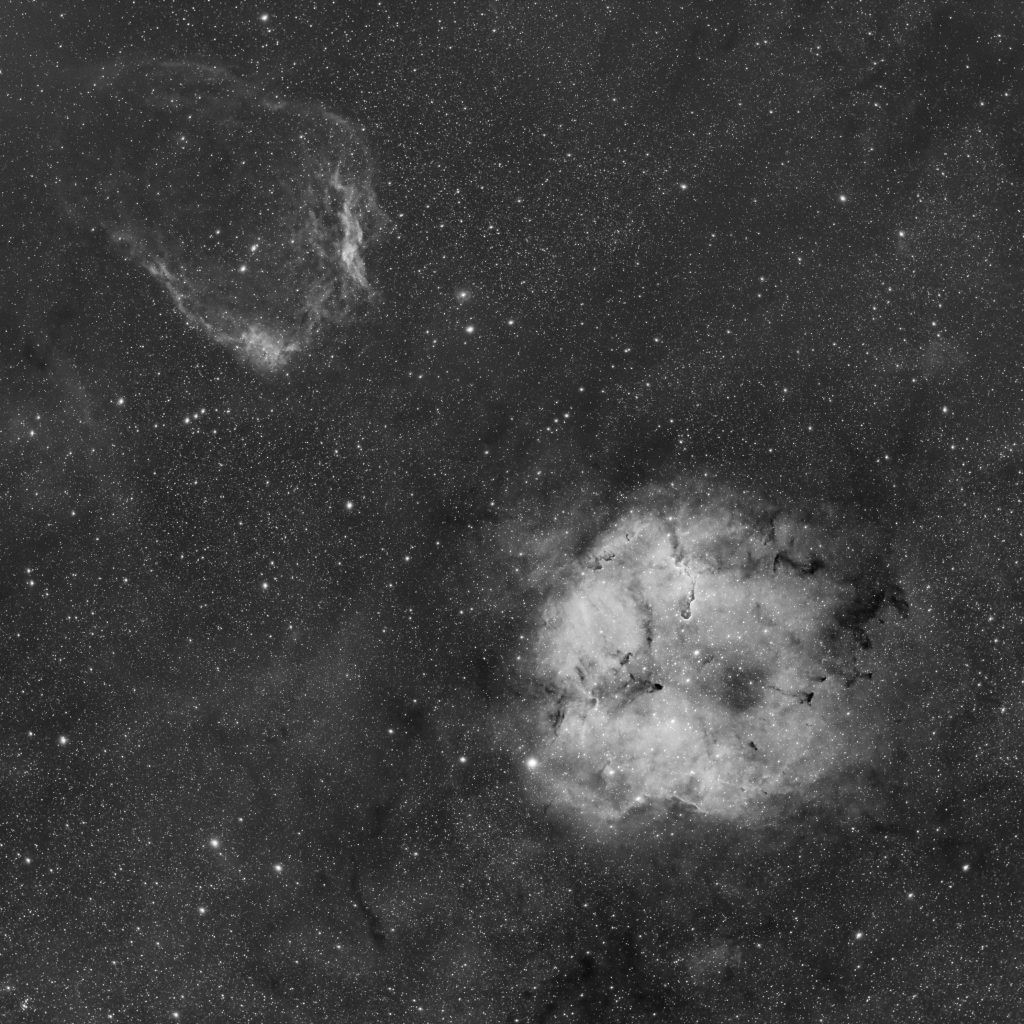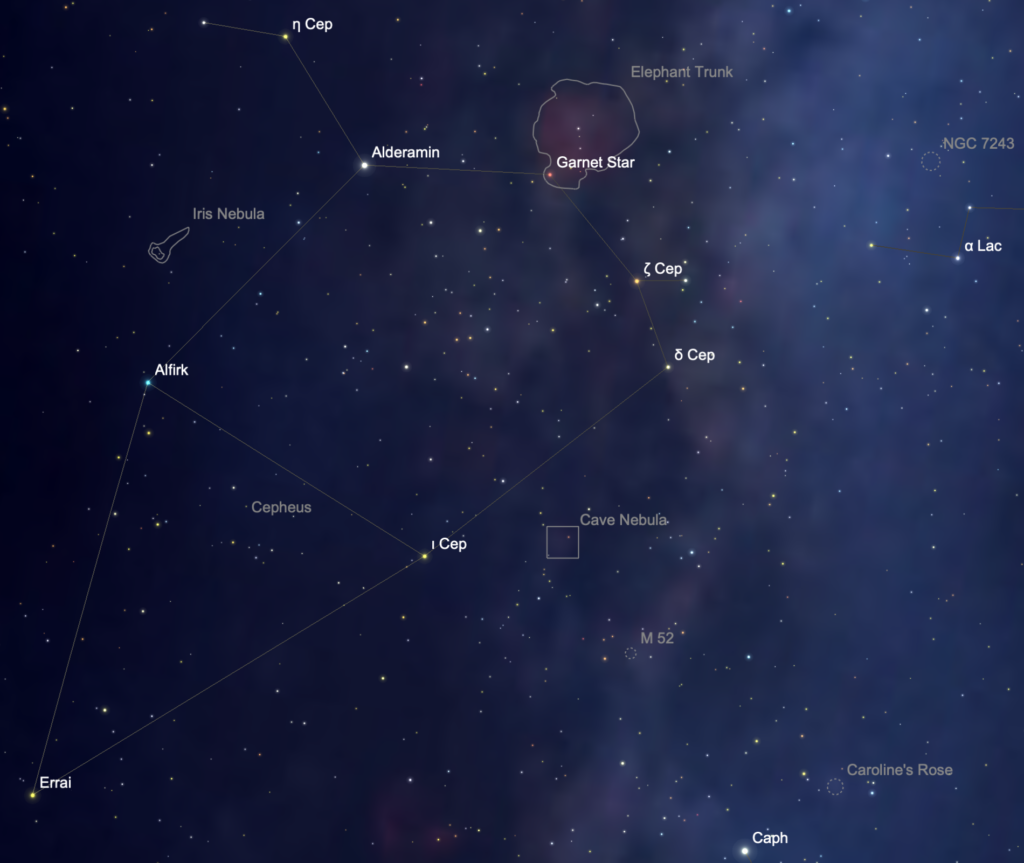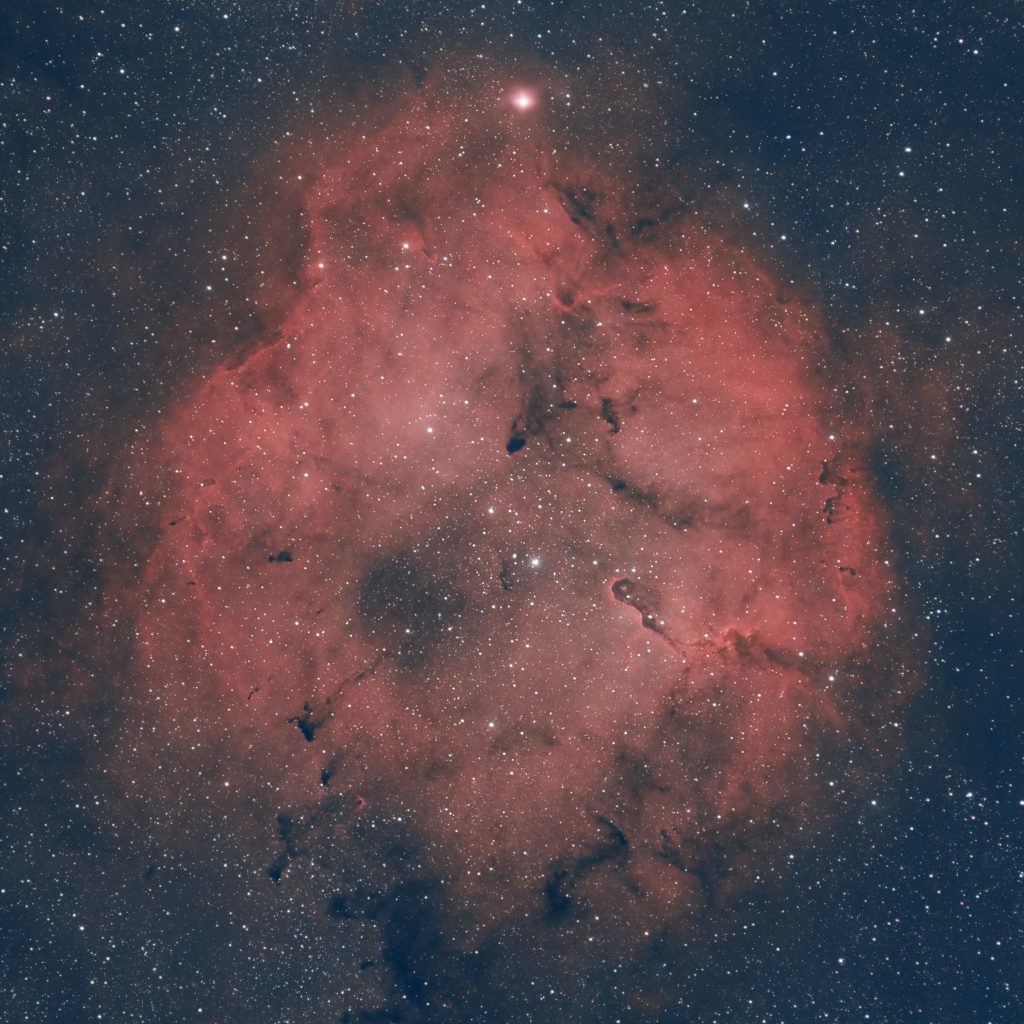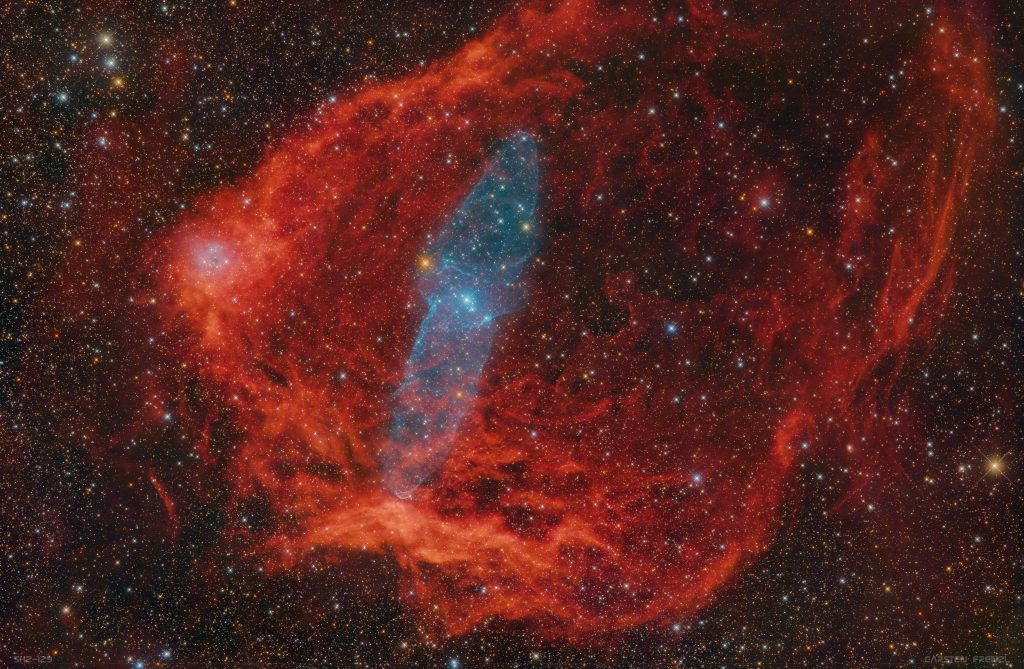
This month we turn our gaze to a field of view about 7o square in the crooked-house of the constellation Cepheus. The field is a little smaller than your closed fist held at arm’s length. In the image above, captured in H-alpha with a small monochrome astronomy camera and a 90 mm lens, you see in this field a pair of spectacular emission nebulae, an embedded star cluster, half-dozen dark nebulae hiding regions of new star formation, and a blazing late-stage star on the verge of blowing itself to bits.
The most prominent feature in this field is the floral-shaped nebula IC 1396 at lower right. Within this immense nebula lies a cluster of bright blue-white stars that overlap with residual hydrogen gas and dust from which they formed. Catalogued as Trumpler 37, this relatively bright star cluster with some 400 members is easily visible in binoculars or a small telescope. It spans about three full-moon diameters (about 1.5o) and shines with a combine brightness of around magnitude 3.5. One of the youngest known clusters in the galaxy, Trumpler (Tr) 37 formed just 3 million years ago. In a telescope at low magnification, this sprawling arrangement of stars looks a little like a four-leafed clover.

While extremely difficult to see because of its size and low surface brightness, the complex and colorful emission nebula IC 1396 enveloping Tr 37 makes for an excellent target for astrophotographers. But don’t give up on seeing it visually – I’ve spotted it in dark sky with a 120mm f/5 rich-field refractor and an Orion Ultrablock UHC filter. The inky-dark nebula Barnard 160, at the southern end of the bright nebula, is also prominent as it obscures the rich tapestry of background stars.
The roughly circular IC 1396 spans about three degrees – about six full-moon diameters. The vast cloud of hydrogen gas that makes up the nebula gains its energy from the immense and powerful O-type star HD206267 near the geometric center of the complex. Bright knots of glowing gas fleck the nebula, and deeper images reveal dark globules of dust where new stars form and continue to add to the ranks of the cluster. The most striking knot, the Elephant Trunk, resembles a long finger of darkness with a bright rim at the tip where the radiation from bright new stars collides with cold interstellar gas and dust (see image below).

At the northern edge of IC 1396, like a crown jewel, sits the 4th-magnitude star Mu Cephei. William Herschel first noted the star in the 18th century and wrote it was of “a very fine deep garnet colour”, so it’s often called “Herschel’s Garnet Star”. The star is not associated with the nebula or cluster: it lies at a distance of about 3,000 light years, about 500 light years further away than IC 1396. Mu Cephei is one of the brightest and largest known stars in the Milky Way, an evolved red supergiant that’s ballooned to a size such that it would swallow Jupiter were it at the center of our solar system. It’s a long-period variable star with a semi-regular period and varies from magnitude 3.4 to 5.1, roughly, with a period of about 860 days. The star makes for an excellent target in binoculars and a telescope, or without any optics at all. Though it’s not a carbon star, it is one of the reddest stars you can see in the night sky without optical aid. Like most red supergiants, Mu Cephei is well on its way to blowing up as a supernova and will leave behind what remains as a black hole.
At last in this little tour, at upper left in the monochrome image at the top of the page, we see the angular emission nebula Sh2-129 known as the ‘Flying Bat Nebula’. Far fainter than the larger IC 1396, this object is out of reach for visual observers but remains a favorite object for astro-imagers because of its striking shape and starry background. This vivid region of glowing red hydrogen gas in the northern Milky Way isn’t particularly unusual. But in 2011, the French astrophotgrapher Nicolas Outters discovered a much fainter nebula hidden within the Flying Bat. Now called the Squid Nebula, it appears as a blue-green bipolar structure that results from the emission not of hydrogen by doubly-ionized oxygen. Its shape and color might suggest this is a planetary nebula. But it appears to be an outflow of gas excited by the star HR8119 near its center. The Squid and Bat seem to be located at the same distance and move together which suggest they’re part of the same molecular complex.

Capturing an image of Sh2-129, the Flying Bat, is easy enough. But the Squid takes some effort and several tens of hours of imaging time to tease out its detail from its much brighter surroundings.
Share This: